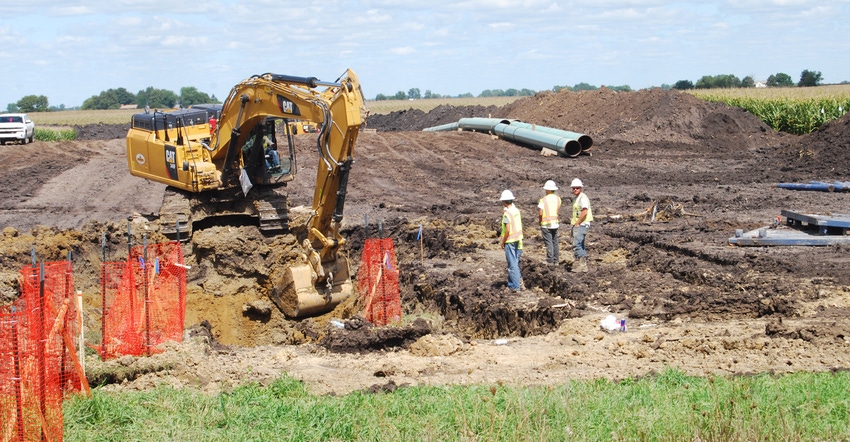
On Dec. 12, Mahdi Al-Kaisi, Iowa State University Extension soil management specialist, along with Mark Hanna, ISU Extension ag and biosystems engineering specialist, and I held a meeting titled “Pipeline land BMPs — It has gone through, now what?” in the Boone County Extension office.
The pipeline, of course, is the Dakota Access Oil pipeline that was buried in 2016 across 18 counties, crossing the state diagonally, entering Iowa’s northwest corner and exiting the southeast corner of the state — cutting a 346 mile path. The pipeline is buried at least 48 inches deep.
The purpose of our meeting was to explore potential solutions to the soil disturbance and discuss practices that can be implemented to mitigate concerns raised by the audience at the beginning of the meeting. Following that discussion, brief presentations covering soil characteristics and functions were given to address the audience’s management concerns.
These presentations covered the major soil properties; biological, physical and chemical. These properties are interrelated and influence each other as they are influenced by management practices.
During the ensuing discussion, a range of management practices were explored. We discussed why tillage should be avoided in the swath created by the pipeline and why keeping living roots in that area as much of the year as possible would be beneficial. These two things will allow rebuilding of the soil structure, which is critical to water infiltration, draining of excess water, improvement of plant-available water-holding capacity and root exploration. By improving the soil’s physical structure, soil biological function will be able to rebound, and both of those will in turn help improve nutrient cycling and availability: the soil’s chemical properties.
Suggested management for affected areas
For soil testing, we recommend sampling the disturbed area of the field separately. Keep the soil samples small, no more than 2 acres per sample and take lots of cores per sample. We suggest 15 or more cores per sample. You should still use 6-inch deep cores, the same as for sampling the rest of the field.
Keep a close eye on any field tile crossings. The company that installed the pipeline used techniques to keep the tile from sagging at the point of crossing, but only time will tell if they were successful.
Fertility concerns will be, in many cases, legitimate for at least a short time. But as the microbial community in the soil is restored and enhanced and the physical condition repairs itself — that is, the soil structure is restored — the fertility will return. That will be shown when soil test results are used. Use ISU Extension publication PM 1688 “A General Guide for Crop Nutrient and Limestone Recommendations in Iowa” as your guideline for nutrient application.
For cover crops and seeding recommendations, you should probably use a higher rate than normal because of the physical injury the soil has experienced. You can still use species such as winter rye and radishes. Normally 4 to 6 pounds per acre is the seeding limit for radish, but in this situation you may want to go as high as 10 pounds of radish with 30 to 60 pounds of rye. If alfalfa is an option, it would be a great choice due to its extensive and deep rooting. You will want to continue to have living roots in the affected area for several years.
Refrain from doing any primary tillage. Each tillage pass breaks soil aggregates and you want to encourage all the aggregation you can. The pipeline company deep-ripped the deeper soil before replacing the upper soil and then worked that. Therefore, deep ripping, moldboard plowing, even chisel plowing will do more harm than good, while adding to compaction. You could do a light secondary tillage pass if needed to smooth things down.
Consider not planting this disturbed area to row crops in the next couple of years. Putting it in the Conservation Reserve Program or alfalfa would be good alternatives. If you do decide to plant this area to corn and soybean, avoid continuous corn. Rotate the crop each year. The taproot of soybean will help. Use of manure would be good, if that is an option. It will help all three dimensions of soils: chemistry, microbiology and physics.
For more information on how all three major soil properties interact and enable higher productivity, attend the Soil Health Conference in Ames on Feb. 16-17. Register here.
About the Author(s)
You May Also Like




